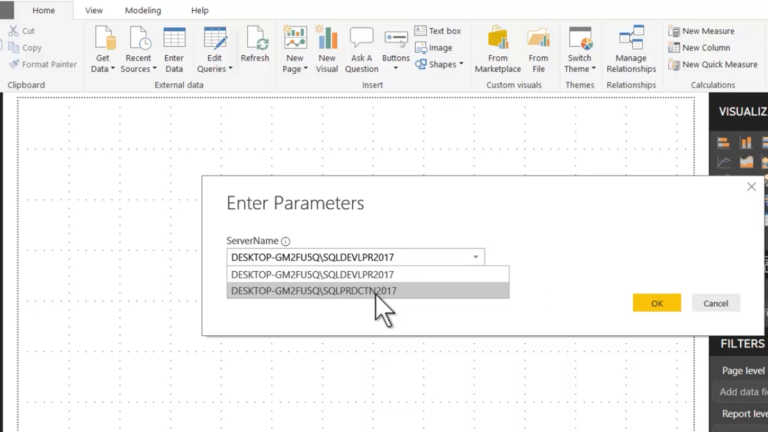Unleashing the Power of Literal Values in Power BI – Elevate Your Data Analysis Game!
Introduction
In the world of data analysis, having accurate and meaningful insights is paramount. Power BI, Microsoft’s powerful business intelligence tool, provides a wide array of features to help users gain valuable insights from their data. One such feature that often goes unnoticed is the use of literal values. In this article, we will explore the potential of literal values in Power BI and how they can significantly enhance your data analysis capabilities.
Understanding Literal Values
What are Literal Values?
Literal values, in the context of Power BI, refer to fixed values that are directly embedded into the data model or calculations. Unlike dynamic values derived from expressions or calculations, literal values remain constant and are not subject to change based on user input or context.
Importance of Literal Values
Literal values play a crucial role in data analysis as they provide a foundation for consistent and reliable reporting. By incorporating literal values into your Power BI models, you can establish standardized metrics, thresholds, or other constants that ensure accurate and uniform analysis across your organization.
Leveraging Literal Values in Power BI
Benefits of Literal Values
The utilization of literal values in Power BI offers several key benefits. Firstly, it enhances the clarity and understanding of your reports by providing descriptive labels and predefined values. Secondly, literal values streamline data filtering and slicing, allowing users to focus on specific subsets of data effortlessly. Lastly, literal values enable dynamic reporting, empowering users to create flexible and interactive visuals that adapt to changing requirements.
Implementation in Power BI
Implementing literal values in Power BI is a straightforward process. You can define literal values directly in the Power Query Editor or create calculated tables/columns in the Data View. By leveraging Power BI’s DAX (Data Analysis Expressions) language, you can incorporate literal values within measures, variables, or as standalone entities, depending on your specific requirements.
Enhancing Data Analysis with Literal Values
Filtering and Slicing Data
Literal values provide an intuitive way to filter and slice data in Power BI reports. By incorporating predefined filters or slicers based on literal values, users can easily narrow down their analysis to specific time periods, regions, or any other categorical dimensions. This enables quick and targeted insights without the need for complex calculations or user interactions.
Dynamic Reporting
With literal values, you can create dynamic reports that adapt to user selections or changing contexts. By using measures or DAX expressions that reference literal values, you can dynamically adjust calculations, visual formatting, or conditional logic. This empowers users to explore data from different angles and gain deeper insights without the need for manual adjustments.
Drill-through Capabilities
Literal values can be leveraged to enable drill-through capabilities in Power BI. By defining hierarchical relationships between tables and incorporating literal values as drill-through filters, users can drill down into specific details or dimensions of their data. This functionality allows for interactive exploration and analysis at various levels of granularity.
Best Practices for Using Literal Values
Consistent Formatting
To maintain consistency and improve user experience, it is essential to format literal values consistently across your Power BI reports. Ensure that labels, units, and formatting conventions align with your organization’s standards. Consistent formatting not only enhances readability but also avoids confusion or misinterpretation of the data.
Utilizing Variables
Using variables in combination with literal values can enhance the flexibility and maintainability of your Power BI models. By assigning literal values to variables, you can easily modify or update them in a single location, rather than making changes throughout your entire report. This approach promotes efficient maintenance and reduces the risk of errors.
Advanced Techniques with Literal Values
Conditional Formatting
Conditional formatting allows you to apply different visual styles or formatting based on specific conditions or literal values. By utilizing DAX expressions and conditional formatting rules, you can highlight important data points, visualize variances, or emphasize outliers. This technique adds visual impact to your reports and facilitates data interpretation.
Customizing Measures
Literal values can be utilized within measures to customize calculations or create dynamic thresholds. By incorporating literal values in your measures, you can dynamically adjust calculations based on predefined benchmarks, thresholds, or goals. This enables you to provide contextual insights and measure performance against predefined targets.
Case Study: Realizing the Power of Literal Values
To further illustrate the potential of literal values in Power BI, let’s consider a case study. Imagine a retail company analyzing sales performance across multiple regions. By incorporating literal values for key performance indicators (KPIs) such as target sales, average order value, or customer satisfaction thresholds, the company can compare actual performance against predefined goals. This empowers decision-makers to identify underperforming regions, take corrective actions, and drive overall business growth.
Conclusion
Literal values in Power BI offer a powerful tool for enhancing data analysis and reporting capabilities. By incorporating fixed values directly into your models and calculations, you can ensure consistency, improve filtering and slicing, enable dynamic reporting, and leverage advanced techniques such as conditional formatting and customized measures. Understanding and harnessing the power of literal values can elevate your data analysis game and provide valuable insights for informed decision-making.
FAQs (Frequently Asked Questions)
Q: Can literal values be changed by end-users in Power BI?
A: No, literal values are fixed and cannot be altered by end-users.
Q: Can literal values be used in calculated columns?
A: Yes, literal values can be used within calculated columns to define static values based on specific conditions.
Q: Are literal values limited to numeric data?
A: No, literal values can be used for both numeric and non-numeric data, such as text or dates.
Q: Can literal values be used in Power BI visuals?
A: Yes, literal values can be referenced in various visual elements, such as titles, tooltips, or axis labels.
Q: Is it possible to change the formatting of literal values in Power BI reports?
A: Yes, you can apply formatting options such as currency symbols, decimal places, or date formats to enhance the visual representation of literal values.















